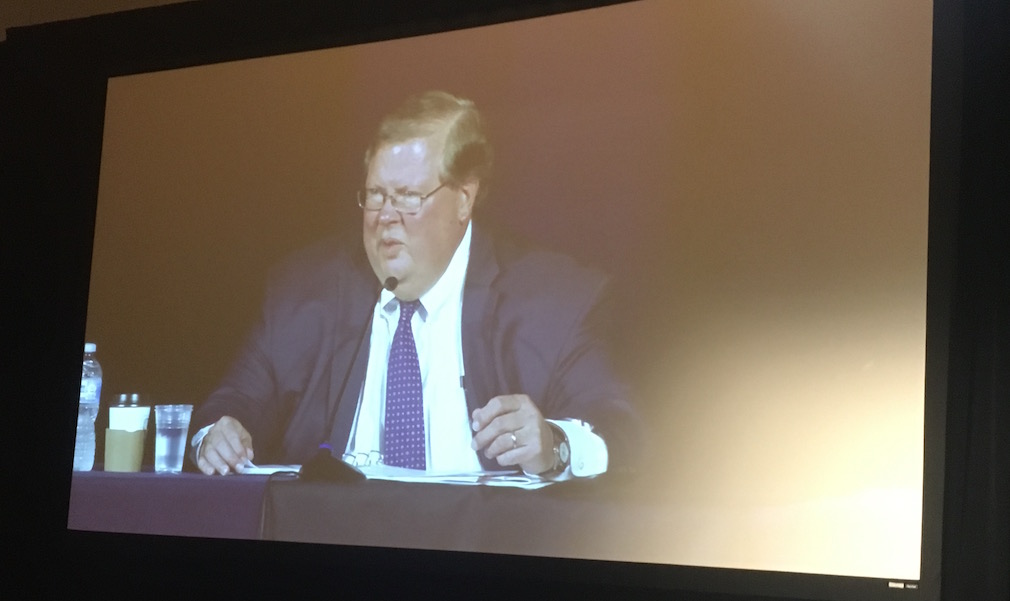Federal Housing Administration Commissioner Brian Montgomery said Tuesday at the National Reverse Mortgage Lenders Association’s annual meeting in San Diego that the agency is working to address the volatility within the reverse mortgage program, hinting that the industry can expect more change ahead.
“The HECM program has profound issues, and efforts in past years to address these problems have generally only delivered short-term fixes,” Montgomery said before a packed room.
“The program drained $14.5 billion dollars from the MMI Fund, and it continues to be heavily subsidized by the forward book, so much so that we were just barely above our mandatory 2% capital ratio required by Congress at the end of the last fiscal year,” he added.
In October 2017, FHA issued major program changes, lowering principal limit factors and adjusting mortgage insurance premiums. In effect, the new guidelines reduced the proceeds available to reverse mortgage borrowers and limited the number of seniors who could qualify for the loan.
Montgomery acknowledged that the changes were impactful for lenders, but said they did not go far enough to solve the program’s problems.
“In a few short weeks, we will publish our 2018 Report to Congress. I can’t go into a lot of detail yet, but I can tell you the adjustments FHA made to the PLFs and the adjustments made to the MIP in 2017 were designed to help, but did not fully solve, for the financial volatility of the program. And this we must solve for if the program is to continue in the long term,” he said.
Montgomery said in June, soon after he assumed his role as commissioner, that he established two teams to assess FHA’s HECM books of business.
“Our goal was to stop the bleeding and improve the viability and sustainability of the program over the long term,” he added. “The guiding principals were to stave off any further guts to the PLFs and to not raise premiums – a feat which seemed nearly impossible when our work first began.”
“We looked at risk factors that affect the severity of claims, such as what degree of appraisals on the front end were inflated – a dynamic that we believe had a deleterious effect on the FHA program,” he said.
Earlier this month, FHA took steps to address this issue, instituting a second appraisal rule on select HECM loans.
“While the appraisal inflation was found to be more pronounced a decade ago and it has decreased over time – substantially I would add – it has not been eliminated,” he said.
Montgomery said the rule was the least disruptive of the changes the agency considered.
“The reality is that the HECM appraisal submission and assessment changes are the least impactful of the other options on that were on the table, including increases to the annual monthly premiums, or further reductions in the PLF,” he said.
The commissioner said the assessment of the risk factors associated with the HECM has come to require repeated adjustments to help right the program, saying it has become an “annual ritual of short-term maneuvering” ahead of every fiscal year.
“I recognize that in the reverse mortgage business we’ve seen lower volume. There is a worry that we haven’t seen enough business to make it economical, but we want to strengthen this program, and to do so, it must be prudently managed,” he said. “Make no mistake, we are dedicated to bringing this program to a reasonable level of financial self-sufficiency.”







